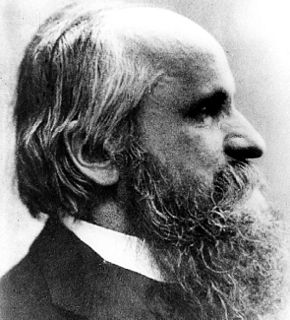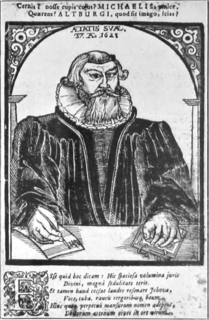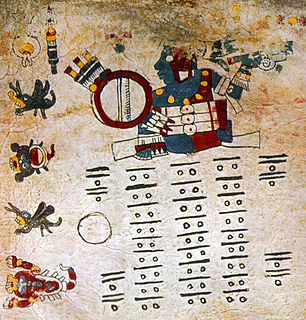Related Research Articles

Alexius Meinong Ritter von Handschuchsheim was an Austrian philosopher, a realist known for his unique ontology. He also made contributions to philosophy of mind and theory of value.

The Papyrus of Ani is a papyrus manuscript in the form of a scroll with cursive hieroglyphs and color illustrations that was created c. 1250 BCE, during the Nineteenth Dynasty of the New Kingdom of ancient Egypt. Egyptians compiled an individualized book for certain people upon their death, called the Book of Going Forth by Day, more commonly known as the Book of the Dead, typically containing declarations and spells to help the deceased in their afterlife. The Papyrus of Ani is the manuscript compiled for the Theban scribe Ani.

The Codex Zouche-Nuttall or Codex Tonindeye is an accordion-folded pre-Columbian document of Mixtec pictography, now in the collections of the British Museum. It is one of about 16 manuscripts from Mexico that are entirely pre-Columbian in origin. The codex derives its name from Zelia Nuttall, who first published it in 1902, and Baroness Zouche, its donor.

The Codex Magliabechiano is a pictorial Aztec codex created during the mid-16th century, in the early Spanish colonial period. It is representative of a set of codices known collectively as the Magliabechiano Group. The Codex Magliabechiano is based on an earlier unknown codex, which is assumed to have been the prototype for the Magliabechiano Group. It is named after Antonio Magliabechi, a 17th-century Italian manuscript collector, and is held in the Biblioteca Nazionale Centrale, Florence, Italy.

Codex Ríos is an Italian translation and augmentation of a Spanish colonial-era manuscript, Codex Telleriano-Remensis, that is partially attributed to Pedro de los Ríos, a Dominican friar working in Oaxaca and Puebla between 1547 and 1562. The codex itself was likely written and drawn in Italy after 1566.
Helmut Brenner was an Austrian ethnomusicologist.

The Codex Laud, or Laudianus, is a sixteenth-century Mesoamerican codex named for William Laud, an English archbishop who was the former owner. It is from the Borgia Group, and is a pictorial manuscript consisting of 24 leaves from Central Mexico, dating from before the Spanish takeover. It is evidently incomplete.

The Codex Colombino is a part of a Mixtec codex held in the collection of the National Museum of Anthropology in Mexico City. It is the only Mesoamerican codex that remains in Mexican territory. It deals with the genealogy, marriages and bellicose conquests of the Mixtec lord Eight Deer Jaguar Claw.

The Grazer Autorinnen Autorenversammlung (GAV) was founded under the name of Grazer Autorenversammlung in March 1973 and is one of the two major Austrian writers' association. H. C. Artmann was its first president. Other writers who contributed to the foundation of the association, were Friedrich Achleitner, Wolfgang Bauer, Georg Bydlinski, Barbara Frischmuth, Peter Handke, Ernst Jandl, Alfred Kolleritsch, Friederike Mayröcker, Reinhard Priessnitz, Peter Rosei, Gerhard Roth, Gerhard Rühm, Michael Scharang, and Oswald Wiener.

Michael Altenburg was a German theologian and composer.
The Austrian literary magazine Literatur und Kritik was founded in April 1966 by the Austrian writers Rudolf Henz, Gerhard Fritsch, and Paul Kruntorad as successor of the literary publication Wort in der Zeit, which had existed since 1955.

The Codex Cospi is a pre-Columbian Mesoamerican pictorial manuscript, included in the Borgia Group. It is currently located in the library of the University of Bologna.

Codex Vindobonensis Mexicanus I, also known as Codex Vindobonensis C, or Codex Mexicanus I is an accordion-folded pre-Columbian piece of Mixtec writing. It is a ritual-calendrical and genealogical document dated to the 14th century.

Philipp Sarlay, also named Filipp Sarlay was an Austrian principal of telegraph office of Austrian-Hungarian origin and a pioneer in technological and scientific accomplishments. He was a follower of naturopathy, abstainer and vegetarian. Furthermore, he was occupied by studying mathematical phenomena
The Verona Sacramentary or Leonine Sacramentary is the oldest surviving liturgical book of the Roman rite. It is not a sacramentary in the strict sense, but rather a private collection of libelli missarum containing only the prayers for certain Masses and not the scriptures, the canon or the antiphons. It is named after the sole surviving manuscript, Codex Veronensis LXXXV, which was found in the chapter library of the cathedral of Verona by Giuseppe Bianchini and published in his four-volume Anastasii bibliothecarii vitae Romanorum pontificum in 1735. It is sometimes called "Leonine" because it has been attributed to Pope Leo I, but while some of the prayers may be his compositions the entire work certainly is not.
Leopold Fischer (1902-1978) was an Austrian police officer and much-awarded Pictorialist, and later, Modernist, photographer.
Walter Kolneder was an Austrian musicologist and violist.
Adeva is an American singer.

Henriette Elisabetha Jeanette Jügel was a German landscape and portrait painter.
The Akademische Verlagsgesellschaft, later Akademische Verlagsgesellschaft Geest & Portig, in Leipzig was an important East-German academic publisher, which was founded in 1906 and was dissolved in 1991 as a consequence of the German reunification.
References
- ↑ "Akademische Druck- u. Verlagsanstalt Dr. Paul Struzl GmbH in Graz". wlw.de.
- ↑ Akademische Druck- u. Verlagsanstalt Dr. Paul Struzl GmbH on Europages
- ↑ Karlpeter Elis: Steirische Druckgeschichte, 1982; retrieved 2 July 2021
- ↑ Akademische Druck- u. Verlagsanstalt Dr. Paul Struzl GmbH ceginformacio.hu
- ↑ Über 70 Jahre Akademische Druck- u. Verlagsanstalt adeva.com
- ↑ Akademische Druck und Verlagsanstalt on BnF